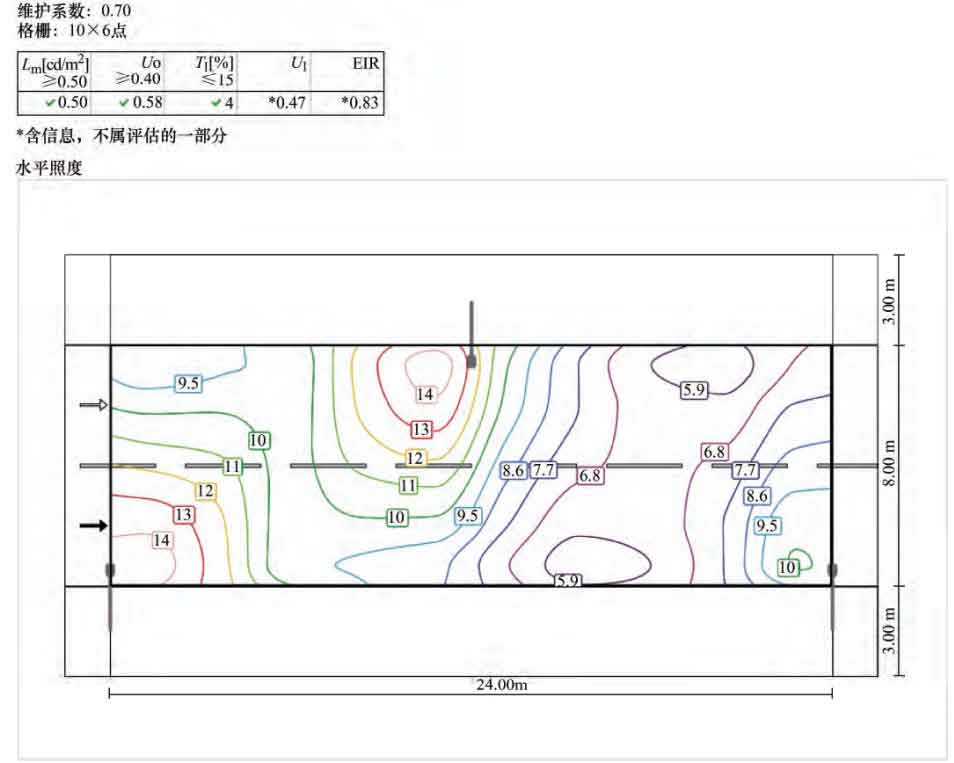In the field of municipal engineering, the use of traditional street lights not only has high initial investment costs, but also has the disadvantages of high energy consumption and high operating costs during the later operation process.With the development of technology, LED light sources have gradually entered the civilian and industrial fields, with advantages such as directional light emission, low power consumption, good driving characteristics, fast response speed, and long service life.In addition, LED light sources also have the advantages of DC drive and low drive voltage, making it possible to use solar photovoltaic power generation-battery-LED lamp independent power supply lighting system.Currently, LED photovoltaic lighting street lights are widely used in rural roads in China, while high-pressure sodium lamps powered by municipal power supply are still used as lighting tools in urban roads.With the advancement of technology, the technology of LED photovoltaic lighting system has been relatively mature, and the implementation of CJJ 45-2015 “Standard for Urban Road Lighting Design” provides a basis for its application. With the reduction of the cost of photovoltaic components and energy storage batteries, as well as the improvement of performance, the technical conditions and opportunities for the application of LED photovoltaic lighting in urban roads have gradually matured.
1 Comparative analysis with traditional lighting systems
By comparing and analyzing traditional high-pressure sodium lamps and LED photovoltaic lighting systems, it can be seen that:
1) The theoretical life of high-pressure sodium lamp light source is 20,000 hours, but due to the impact of grid voltage fluctuations and high starting current, the actual life is only 5,000-6,000 hours. The failure of the lamp is random and requires the rental of overhead vehicles to replace the lamp, resulting in high maintenance costs in the later stage. In the LED photovoltaic lighting system, except for the battery, other components can have a life of more than 10 years.The use of maintenance-free gel batteries can increase the battery life from 3-5 years to 6-8 years, resulting in relatively low maintenance costs.
2) The color temperature of sodium lamps is 2000-2500 K, which is 360° luminous and has low light output efficiency. However, the suitable color temperature for road lighting is 2800-4200 K. LED lamps are cut-off light sources, which can be manufactured through packaging processes to produce a suitable color temperature for road lighting.
3) In recent years, the price of solar photovoltaic modules has continued to decline. According to the historical purchasing data of the enterprise where the author works, the purchasing price of monocrystalline silicon solar panels in January 2015 was 3.5 yuan/W, and it has dropped to 1.5 yuan/W by 2020.At the same time, the price of LED solar street lamps has also shown a significant downward trend.In the 2015 “Kunming Building Materials Price Guide”, the guiding price of 10 m high single-arm single-arm 70 W LED solar street lamps was 15,978.00 yuan/set, while in the September issue of 2020, the 60 W/solar panel 200 W/gelled lead-acid battery 160 A·h/8 m high LED solar street lights with 60 W/solar panel 200 W/gelled lead-acid battery 160 A·h/8 m high LED solar street lamps have dropped to 3,451.33 yuan/set, and its single-set purchasing price has approached that of the single-arm high-pressure sodium lamp of about 2,000 yuan/set. Due to the fact that solar LED street lamps do not require cable trenches and power distribution engineering construction, their actual construction costs have been lower than those of traditional street lights, gradually gaining advantages.
2. Technical design and feasibility study of LED photovoltaic lighting applications
The project is located in the Economic Development Zone of Kunming, and belongs to the lighting project planned during the “Civilized City Creation” period. The content is the construction of 32 sets of solar street lamps on a branch road in the district. The road is asphalt concrete pavement, with a width of about 14 meters, with 3 meters of sidewalks and greenbelts on both sides, and a width of 8 meters for the motorway.
2.1 Regional solar energy resource investigation and analysis
Kunming is a region rich in solar energy resources, with a sunshine rate of 56%, a large annual sun projection angle, an annual solar radiation index of 5016-5852 (MJ/m2), an annual sunshine duration of 2200-3000 hours, and a daily standard light equivalent of 4.26 hours per day. It is a city that is very suitable for the development and utilization of photovoltaic power generation.
2.2 Calculation of consecutive rainy days
An important issue with solar LED street lamps for independent power generation and lighting is that they cannot withstand long periods of continuous rainy weather, resulting in a failure to meet the lighting requirements of municipal roads during the hours of illumination. This is one of the main factors limiting the development of solar LED street lights.
Overseas, the load loss of power system (LOLP) is usually used to measure the reliability of power supply system, which is defined as the ratio of system power failure time to actual power consumption time, ranging from 0 to 1. The smaller the value, the higher the reliability.Literature gives the LOLP of household photovoltaic system as 1×10^-2.According to research, the power supply reliability rate in China’s mega cities has reached over 99.95%, with an average of about 99.96%. However, the power load of urban road lighting is at Level III.
Based on the above analysis, taking into full account the possible reduction in reliability caused by environmental, controller, and lighting components, this article takes LOLP=2×10^-2 from the perspective of battery capacity alone.
According to the definition, the formula is as follows:

In the formula, Pi is the probability of being in power outage state i during the evolution of power outage accidents;L is the set of power outage states during the evolution of power outage accidents.The data shows that from 2001 to 2010, Kunming experienced 10 times of general continuous rainy weather, 4 times of moderate continuous rainy weather, and 2 times of severe continuous rainy weather (general continuous rainy weather, duration of 7-9 days; moderate continuous rainy weather, duration of 10-12 days; severe continuous rainy weather, duration of ≥13 days).
The number of consecutive rainy days for which the system can maintain lighting is X days, assuming that the annual probability of general continuous rain is P1, with a duration of D1, which is compromised at 8 days;the annual probability of moderate continuous rain is P2, with a duration of D2, which is compromised at 11 days;and the annual probability of severe continuous rain is P3, with a duration of D3, which is taken as 14 days.
Establish the following calculation model:

Substituting the calculation results, we can see that X is 4.9 days. Considering the lighting power consumption on the night before the continuous rainy days, the longest non-sunshine power consumption period is 6 days, which can meet reasonable reliability and also take into account the optimal economy of the system.
2.3 Analysis and calculation of illuminance and power
| Level | Road type | Average brightness maintenance value Lav/(cd/m2) | Total uniformity minimum value UO | Minimum longitudinal uniformity UL | Average illuminance maintenance value Eh, av/lx | Minimum uniformity value UE | Maximum initial value of glare limit threshold increment TI (%) | Environmental ratio minimum value SR |
| III | Branch | 0.5/0.75 | 0.4 | — | 8/10 | 0.3 | 15 | — |
The Design Standard for Urban Road Lighting gives the standard values for the lighting of motorway branches, as well as the relationship between the light distribution type, arrangement method, and installation height and spacing of the light fixtures for the light-cutting type fixtures. Literature gives relevant issues that should be noted for LED road lighting.The standard values for motorway lighting are shown in Table 1.The relationship between the arrangement method, installation height, and spacing of the light fixtures is shown in Table 2.
| Layout method | Installation height H/m | Distance S/m |
| Bilateral staggered arrangement | H ≥ 0.7 Weff | S ≤ 3 H |
| Bilateral symmetrical arrangement | H ≥ 0.5 Weff | S ≤ 3 H |
The lamps are arranged on both sides, with a cantilever length of Xl of about 0.5 m. The effective road width Weff is 7 m according to the formula.

Where, ws is the actual width of the road, m;n is the number of lights, 1 for single-sided arrangement and 2 for double-sided arrangement;xl is the overhang length of the light fixture, m.
The average illuminance calculation formula using the utilization factor method is:

Where, u is the utilization factor;k is the maintenance factor.
If Eav is 10 lx, u is approximately 0.32, k is 0.7, H is 8 m, and S is 3 H, and high-rise trees are avoided, an elevation angle of 10° is used for installation to reduce glare. The luminous flux Ф can be calculated as 3 750 lm.
Using DIALUX EVO8.1 to simulate the CIE R2 road standard, it was found that the luminous flux did not meet the requirements for the average luminance maintenance value and the minimum value of total uniformity UO in Table 2. When the luminous flux was adjusted to 3900 lm, the following simulation results were obtained, as shown in the figure below.

Under this illumination condition, the simulation results meet the requirements of road lighting indicators. If the luminous flux is further increased, each indicator will be further improved. Therefore, a 40 W LED lamp with a luminous flux of approximately 4000 lm can meet the design standard requirements.
2.4 Battery capacity calculation
The goal of optimizing the combination of solar cell components and battery capacity is to use the minimum number of solar cell components and battery capacity to reduce project costs while ensuring the reliability of power supply for LED street lights. The optimized design ensures that the LED lighting system operates economically.
From the analysis in the previous section, we know that the lighting power is 40 W. Assuming that the system voltage level is 24 V, the average daily lighting duration of the lighting system is about 9 hours. The daily total power consumption calculation formula is:

Where, QL is the total daily power consumption in watt-hours, W·h;W is the total load power;h is the average daily working hours.
According to the formula, the total daily power consumption can be calculated as 360 W·h.
The calculation formula for the capacity of the solar charge and discharge battery pack is:

Where, C is the capacity of the battery pack, A·h;D is the longest number of days without sunshine for power consumption, taken as 6 days;L is the charging and discharging efficiency of the battery pack, taken as 0.85;DOD is the discharge depth of the battery pack, taken as 75%;Vt is the system operating voltage.
The calculation results using the formula show that the required battery capacity is 24 V, 141.18 A·h, which can be achieved by using two 12 V, 150 A·h gel batteries in series.
2.5 Selection of PV module power
The optimal fixed tilt angle for photovoltaic modules in Kunming is 25°. According to statistical data, the annual total solar radiation on a 25° inclined plane facing south is 6,004.0 MJ/m2. Therefore, when the photovoltaic modules are installed at a 25° inclination facing south, the average daily radiation equivalent is 4.57 h/d.When the system voltage level is also 24 V, the following estimation formula is used:

In the formula, WP is the power of the photovoltaic module, W;d is the number of charging days, set to 3 days;hd is the average daily radiation equivalent when the inclination angle is 25°, with a value of 4.57 h/d.
The formula calculation results show that the power of the photovoltaic module is 225.1 W, and two 24 V 120 W solar panels in parallel can meet the demand.
3 Operation investigation and evaluation
This study investigated the operation of the project after its implementation.The project has been operating normally since its completion in August 2017.During the five consecutive rainy days from May 24 to May 28, 2020, the author conducted on-site investigations on the evening of May 28 and measured with the TASI TA8121 illuminometer. The results showed that all the street lights were able to light up normally. The measured values of ground illuminance of street lights without obvious stray light interference were between 11 and 14 lx, and the measured values of ground illuminance of street lights with obvious stray light interference were between 15 and 18 lx.It can be considered that the lighting effect and ability to resist continuous rainy days of the project meet the design requirements, and there were no malfunctions or repairs during the project operation.
According to the price guidance of Kunming City in September 2020, the purchase cost of an LED solar street lamp with a 60 W/solar panel, a 200 W/gelled lead-acid battery, a 160 A·h/lamp post height of 8 m, and a gelled lead-acid battery is 3,451.33 yuan. Considering the increased costs of the solar panel 120 W×2, battery 150 A·h×2, and the strength design of the street lamp post used in this design, the purchase cost of the solar street lamp meeting the design requirements is approximately 4,200 yuan.However, the purchase price of a traditional commercial street lamp with the same lighting effect is approximately 2,000 yuan, and the price difference between the two is not significant.
The construction of solar street lamps does not require the installation of lighting box-type substations, construction of pipelines, laying of cables, setting up lighting monitoring boxes and maintenance wells and other supporting facilities, while these work projects necessary for traditional municipal street lights are labor-intensive, long-term and expensive, far exceeding the procurement cost of the street lights themselves, and also seriously affecting the use of roads. In contrast, the construction of solar street lamps is particularly simple and cost-effective.
In terms of operation, solar street lamps do not require the consumption of municipal power, avoiding energy loss on the road and resulting in lower maintenance costs, greatly saving operation and maintenance expenses and achieving the goal of energy conservation and environmental protection.
4. Conclusion
The research results show that under the current technological and economic conditions, the LED photovoltaic lighting system that meets the requirements of municipal branch road lighting design standards in Kunming can achieve the same high reliability as traditional lighting street lamps. In the lighting of pedestrian and non-motorized roads, urban landscapes, parks, and other places with lower standards, its reliability and economy are better. Therefore, it is feasible to further promote the construction of LED photovoltaic lighting systems in some cities with abundant sunshine resources.It can not only meet the requirements of energy conservation and environmental protection, but also meet the needs of a harmonious urban environment, providing a new choice for urban road lighting construction.
